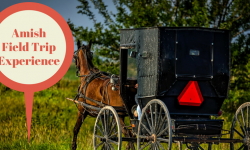It's a proven cliche that most college students don't have two pennies to rub together - but that shouldn't stop you from traveling and traveling well. You're young and experiencing the world is a must. Here's how you can save money and still see the sites, relax on the beach, and eat better than that plate of ramen waiting for you back in the dorm.
1. Research the cheapest mode of transportation.
There are cities and airlines around the U.S. that are crying out for fliers by plummeting prices. For example, United airlines is currently offering a one-way trip from Chicago to Boston for $80 while a trip from Phoenix to San Francisco is $58 from Frontier, and a trip to Miami from either Atlanta or Philadelphia is less than $100. However, many options are still too expensive for most on a budget so your choices include traveling by car, bus, or train.
Road trips with friends can be great fun but, if your objective is to get to a specific destination, it can eat into your touring time. But, road trips are also a great vacation in themselves. Instead of touring a major city, think about spending time with a few good friends knocking about the U.S. and seeing some of the best national parks, roadside attractions, and colorful small towns that aren't on any tourism lists. Check out this blog on U.S. alternatives to international travel to find cities like Hermann, Missouri that look and feel like rural Germany and more.
Depending on your proximity to your destination, buses can be a lot cheaper. You don't have to pay for gas, you don't have to drive, and you can sleep in the back. But...unless you're within a few hours distance, bus travel can be very lengthy with all of their stops.
Trains, on the other hand, are great for long distance, discount travel and many like Amtrak have offers for tourists and students. Amtrak has discounts (25% off and more) for downtown-to-downtown trips in the northeast. This will also cut down on public transportation within the city as the trains take you directly to the action. For example, a trip from New York City to Philadelphia will cost you $41, less than a tank of gas, while New York to Boston or Baltimore runs at $52. Amtrak also offers vacation packages to New Orleans, the Grand Canyon, Niagara Falls, and more. Better yet, the train criss-crosses all over the country and you can practically hop on board one from anywhere.
2. Be flexible about when you go, where you go, where you stay, eat, etc. Focus not on a specific destination but on the type of vacation you want to have. Do you want to lie on the beach or hike the Grand Canyon? Do you want to tour Fifth Avenue or take a trip to Walt Disney World? There are great times to visit each from a budget, and crowd, standpoint. The off-season - winter months for most destinations - often saves you a big chunk of change. If you can swing it with your schedule, many hotels and attractions offer special deals in addition to their discounted prices in attempt to bring in tourists.
Being flexible about your hotel is also a money saver. We all want down feather pillows and ocean views but sometimes it means choosing between a good hotel and good sightseeing. You don't have to stay in a pit, though. Research cheaper hotels outside the city center or in neighboring suburbs and commute to the attractions. Airport hotels may be loud but they're much cheaper, as are roadside highway hotels like Super 8 and Motel 6.
Some cities are, of course, more expensive than others. Seattle was recently named by TripAdvisor as the most expensive city to visit while Hotels.com stated that New York City, Manhattan held the prize for most expensive hotel prices. If these are your dream cities, there are ways around the high prices - all it takes is a little finness and a lot of research. Check out this blog on how to save money in Seattle with a suggested three day itinerary and budget tips.
3. Spend money to save money.
Touring can be ridiculously expensive, especially when you're in a big city like NYC. A single day's touring of, let's say three attractions, can set you back around $60 not counting food, lodging, or souvenirs. Large cities like this have ways around it with tourism passes that can save you up to 60% in admission costs. NYC, for example, offers the New York Pass which gives you free entry to 80+ attractions like the MoMA and the Statue of Liberty plus dining, shopping, and entertainment discounts like 10% off Broadway show tickets. CityPass is another nationwide company that has passes in 11 U.S. cities and regions including Chicago, Boston, Dallas, San Francisco, and Seattle with comparable offers. The cards go for around $60-$80 for adults and depending on the city, they can give you up to two weeks of touring offers.
4. Travel with friends.
It's common sense to say that traveling with friends is cheaper overall than traveling alone or with one other person. If you road trip, share the gas bill. When you're eating out, get an appetizer and an entree and split to save a few bucks. Hotels are also a big money saver with a large group as you can reduce your individual costs by splitting the difference up to 4-5 ways. If you stay in, say, Dallas where the average hotel cost is $65, splitting it with three other people means you only spend $16.25. That's a ridiculously low price, even lower than most hostel prices. Plus, traveling with friends is perhaps the most fun way to travel as you can share experiences, memories, and stories for years after.
5. Destinations and Ideas
- Denver - average hotel cost per night $52
- Charlotte, NC - average hotel cost per night $67
- Phoenix, AZ - hotel costs during the summer months are driven down by the extravagant heat index and averages out at $67 a night.
- Reno, NV - Stay in Reno where hotels average at $83 a night and visit Lake Tahoe or drive 2 hours to Sacramento.
- Road trip to national parks like Yosemite, Yellowstone, Great Smoky Mountains, and Grand Teton - many parks require either one-time entrance fees or, at parks like Yellowstone, they offer 7 day passes for $30 per car entrance and $15 by foot. There are also free entrance days for many parks on particular holidays like Martin Luther King, Jr. Day, President's Day, and Veterans Day.
- Road trip to small towns along the coasts for beautiful scenery and small town prices. The Pacific Coast Highway is one of the most beautiful roads in the U.S. and leads through small, gorgeous towns like Carmel-by-the-Sea and Monterey, California.







